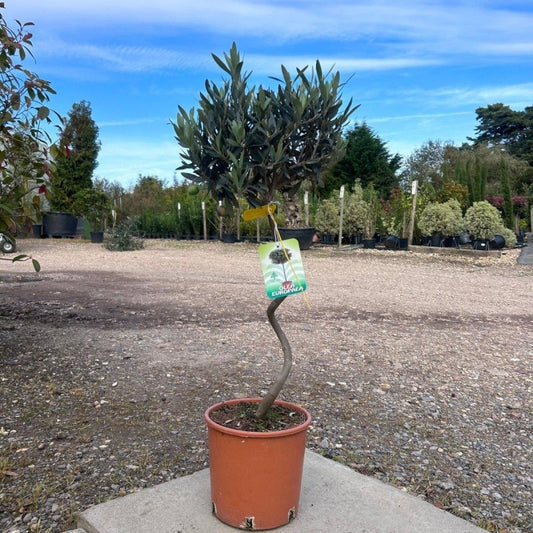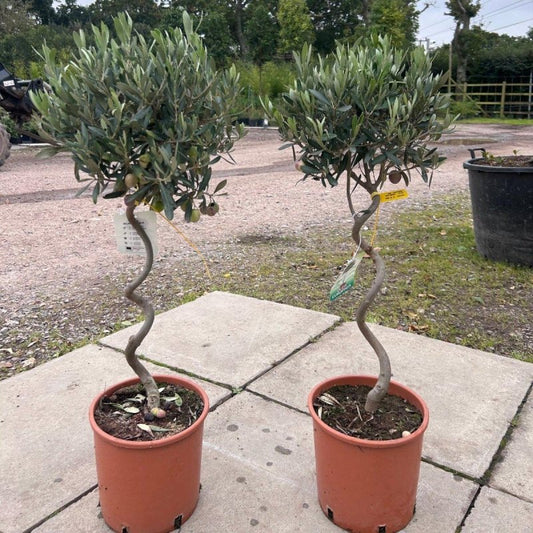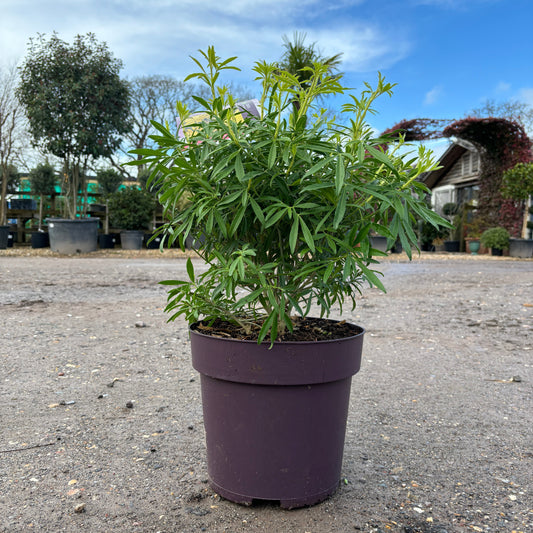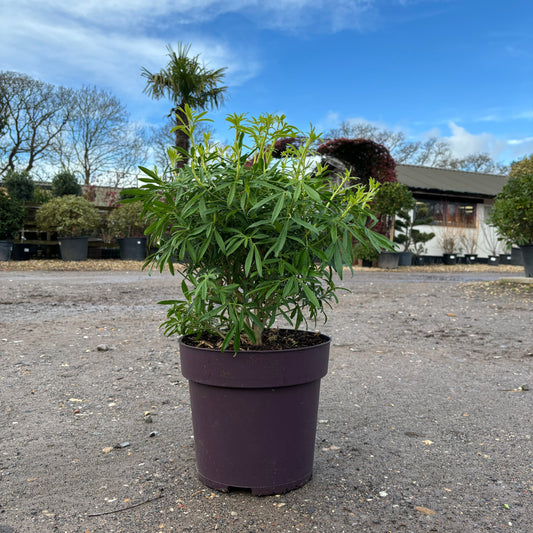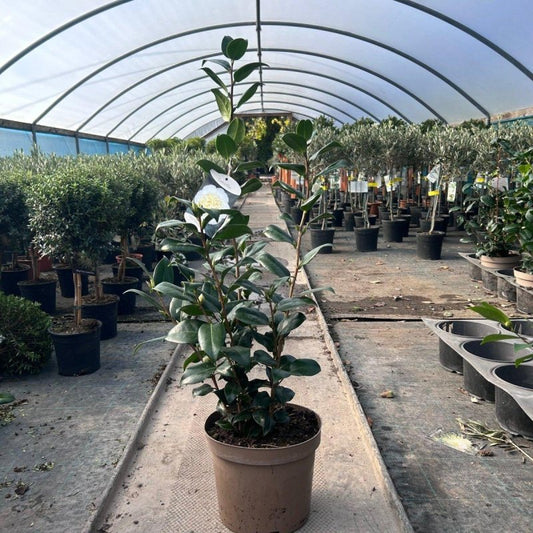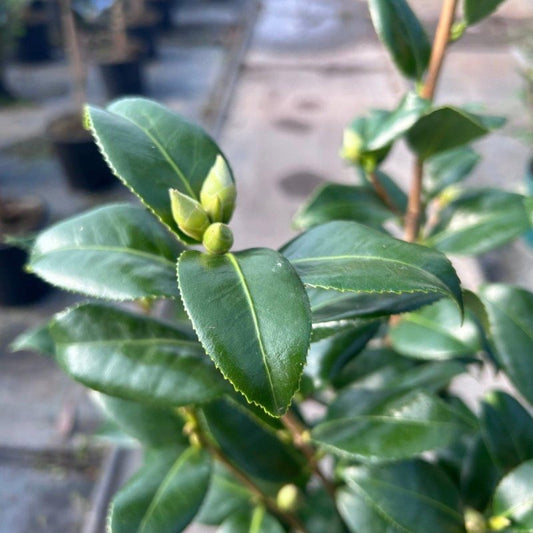How to Care for your Bay Tree
Inside this Article:
Bay trees, with their aromatic leaves and stately appearance, are a valuable addition to any garden or culinary collection. Here's an expanded guide to ensure your bay tree not only survives but thrives.
Optimal Growing Conditions for Bay Trees
Bay trees flourish in environments that offer a balance of sunlight and partial shade. They are adaptable but prefer a well-drained soil, rich in organic matter. While they are hardy and can withstand a range of conditions, they thrive best in sheltered spots that protect them from strong winds and extreme weather. This is particularly important in areas with harsh winters or strong coastal winds.

Watering and Nutrient Requirements
Watering your bay tree correctly is crucial, especially for those grown in containers. The soil should be kept moist but not waterlogged. Over-watering can lead to root rot, while under-watering can stress the plant. During the growing season, water the plant thoroughly whenever the top inch of soil feels dry. In winter, reduce watering but do not let the soil completely dry out.
Feeding your bay tree is also important for its growth and health. Use a balanced, all-purpose fertilizer during the growing season, typically from spring to early fall. This will help promote lush, green growth and a robust root system.
Pruning and Shaping Your Bay Tree
Bay trees are very responsive to pruning, which makes them ideal for creating topiary or maintaining a specific shape. The best time to prune is late spring or early summer. This allows the plant to heal quickly and put on new growth during the growing season. Regular pruning not only maintains the desired shape but also encourages denser foliage. Remove any dead, damaged, or diseased branches to keep the tree healthy.
Winter Care for Bay Trees
In colder climates, bay trees need protection from frost. If your bay tree is in a pot, move it indoors or into a greenhouse during the winter months. For bay trees planted in the ground, wrap them with horticultural fleece to protect them from freezing temperatures. This is especially important for young trees, which are more susceptible to cold damage.
Pest and Disease Management
Bay trees are generally robust but can be susceptible to pests like bay sucker and scale insects, and diseases such as bay leaf blight. Regularly inspect your tree for signs of infestation or disease. Treat pests with insecticidal soap or neem oil, and manage diseases by removing affected leaves and improving air circulation around the plant. Always follow the instructions for any treatment products you use.
Repotting Bay Trees
Bay trees in containers will eventually outgrow their pots. Every two to three years, repot your bay tree into a slightly larger container with fresh potting soil. This not only gives the roots more room to grow but also replenishes the nutrients in the soil, which are vital for the tree's health and growth.
By following these detailed care instructions, your bay tree will be a healthy, vibrant, and productive part of your garden or home for many years to come.
Bay trees, with their aromatic leaves and stately appearance, are a valuable addition to any garden or culinary collection. Here's an expanded guide to ensure your bay tree not only survives but thrives.
Optimal Growing Conditions for Bay Trees
Bay trees flourish in environments that offer a balance of sunlight and partial shade. They are adaptable but prefer a well-drained soil, rich in organic matter. While they are hardy and can withstand a range of conditions, they thrive best in sheltered spots that protect them from strong winds and extreme weather. This is particularly important in areas with harsh winters or strong coastal winds.
Watering and Nutrient Requirements
Watering your bay tree correctly is crucial, especially for those grown in containers. The soil should be kept moist but not waterlogged. Over-watering can lead to root rot, while under-watering can stress the plant. During the growing season, water the plant thoroughly whenever the top inch of soil feels dry. In winter, reduce watering but do not let the soil completely dry out.
Feeding your bay tree is also important for its growth and health. Use a balanced, all-purpose fertilizer during the growing season, typically from spring to early fall. This will help promote lush, green growth and a robust root system.
Pruning and Shaping Your Bay Tree
Bay trees are very responsive to pruning, which makes them ideal for creating topiary or maintaining a specific shape. The best time to prune is late spring or early summer. This allows the plant to heal quickly and put on new growth during the growing season. Regular pruning not only maintains the desired shape but also encourages denser foliage. Remove any dead, damaged, or diseased branches to keep the tree healthy.
Winter Care for Bay Trees
In colder climates, bay trees need protection from frost. If your bay tree is in a pot, move it indoors or into a greenhouse during the winter months. For bay trees planted in the ground, wrap them with horticultural fleece to protect them from freezing temperatures. This is especially important for young trees, which are more susceptible to cold damage.
Pest and Disease Management
Bay trees are generally robust but can be susceptible to pests like bay sucker and scale insects, and diseases such as bay leaf blight. Regularly inspect your tree for signs of infestation or disease. Treat pests with insecticidal soap or neem oil, and manage diseases by removing affected leaves and improving air circulation around the plant. Always follow the instructions for any treatment products you use.
Repotting Bay Trees
Bay trees in containers will eventually outgrow their pots. Every two to three years, repot your bay tree into a slightly larger container with fresh potting soil. This not only gives the roots more room to grow but also replenishes the nutrients in the soil, which are vital for the tree's health and growth.
By following these detailed care instructions, your bay tree will be a healthy, vibrant, and productive part of your garden or home for many years to come.
Trending Now
- From £125.00
£250.00- From £125.00
- Unit price
- per
- From £125.00
- From £125.00
- Unit price
- per
- From £65.00
£130.00- From £65.00
- Unit price
- per
- From £55.00
£110.00- From £55.00
- Unit price
- per
- £8.00
- £8.00
- Unit price
- per
- £20.00
- £20.00
- Unit price
- per
- £8.00
- £8.00
- Unit price
- per
- £16.00
- £16.00
- Unit price
- per
- Choosing a selection results in a full page refresh.


